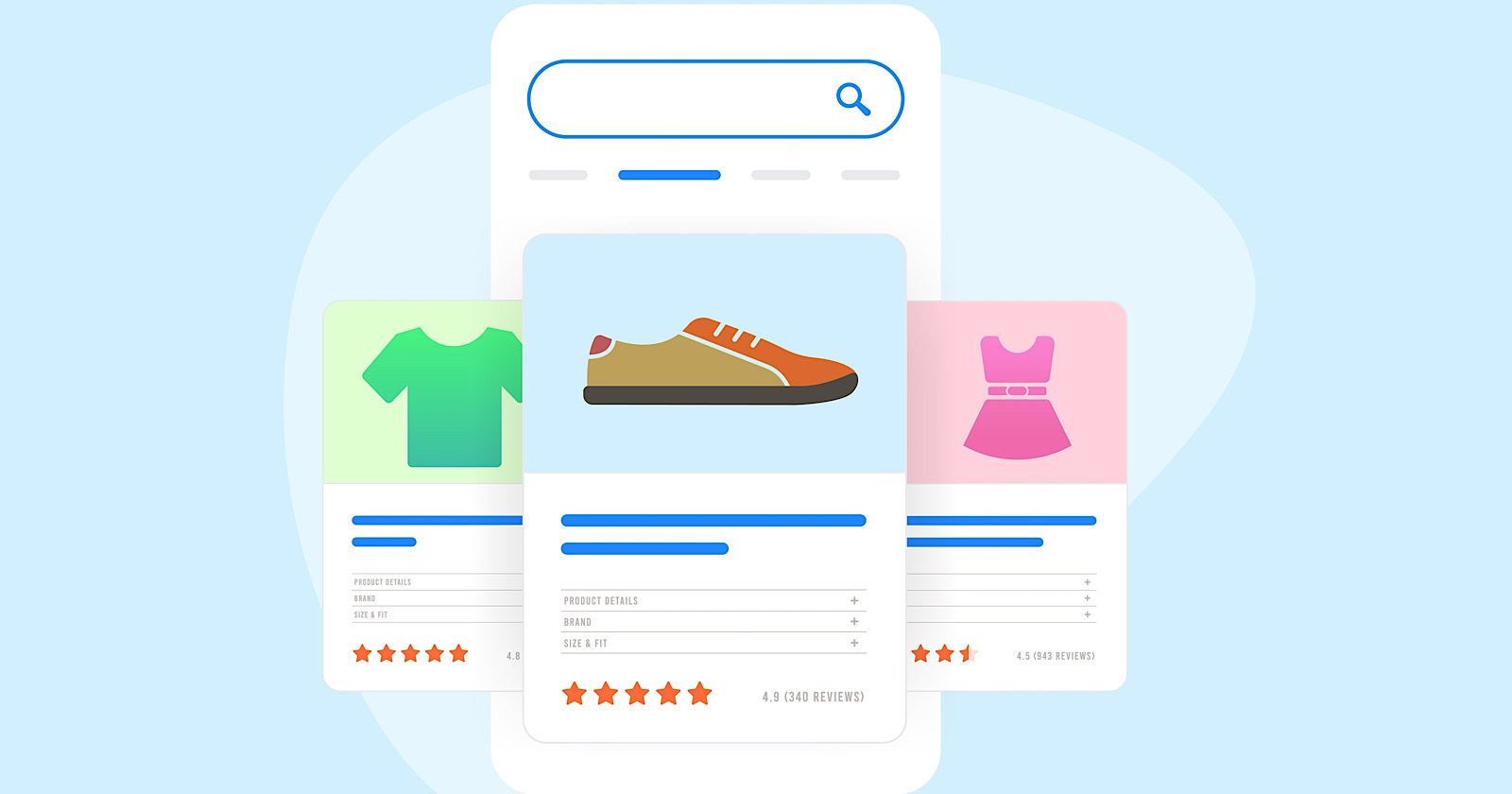SEO
Interviewing Niche B2B Experts For A Better Content Strategy
The B2B industry can be niche and specific, which may lead some people to feel like they need to be an expert to create a successful content strategy.
What if I told you with a little practice and minimal resources, you can create a strategy like an insider?
Interviewing (when done correctly) can indeed be a powerful tool to learn about someone, or something, in depth.
This is particularly useful in B2B settings where we can use the Problem > Solution > Impact framework to guide the process.
In this article, we will look into why interviewing is an important part of the new client onboarding process, who to interview, and how to prepare – as well as some tips and sample questions to get you started.
Why Interviewing?
Interviewing is an incredibly useful tool when working in a niche or industry that you might not be familiar with.
This is because it can be used as a research method for understanding culture.
Culture – defined as a system of beliefs, worldviews, and values that influence behavior and the material world around a part of society – is central to understanding individuals’ consumption and purchasing behaviors, and motivations.
Anthropologists use interviews to learn more about human behavior because it facilitates human connection, encouraging empathy and insights that often can’t be gained elsewhere.
Last year, I was working with a B2B SaaS startup in a niche industry – and after doing as much online research as possible, I was still feeling lost on how to create that would engage and convert readers into customers.
I felt like a fraud, and my content made it clear that I wasn’t one of them.
Without that human connection, my writing felt dry and didn’t hit the core motivations or problems for individuals or companies in that industry.
This is when I decided to utilize my training as an anthropologist.
I asked if I could schedule an interview with one of the staff members at the startup. The insights that I gained into the company and industry were priceless.
This then led me to remember that I have a family member who also works in the field, and I asked them for 30 minutes to pick their brain.
These two interviews led to a much deeper understanding of my client’s daily workload and workflow, their clients’ expectations, and the culture of their industry.
In turn, this helped me create better content that resonated with their target audience.
While SEO feels technical and more quantitative, there are humans behind the keywords.
Behind humans, we have a whole world of influences, experiences, history, and marketplace mythologies to uncover.
These things can’t be measured in Google Analytics.
Who To Interview
It depends on the number of resources available and your capacity.
Interviewing can be as simple as a 20-minute video call, or as in-depth as an hour-long chat over coffee.
It also depends on the topic’s scope and depth.
Typically, you will begin with your research around the company and its industry. Start at Wikipedia and begin the journey down the rabbit hole.
After completing your homework, you will better understand where gaps in your knowledge exist.
This can help you determine who to interview.
It can be a staff member from the client organization, someone active on LinkedIn, or even a third cousin who works in the industry.
Use your discretion and professionalism to choose the person you can build a good rapport with.
Practice Makes You Better
If you have never conducted an interview before, then practicing a few skills will go a long way.
It looks easier than it is, and there are no do-overs.
Below, I share two aspects of interviewing that I find the most important and how to prepare for them.
1. Taking Notes
Pick a well-trafficked location in your area, such as the weekend flea market, local shopping mall, sporting event, or dog park.
Go with a notebook and pen – no typing.
Find a spot where you can sit for about 30 minutes and take notes while watching everything around you.
There is no need to be a spy or hide behind a bush. Blend in, but be perceptive.
Take notes on what you see for five minutes and include as many details as possible. Break for five minutes and read over your notes, and then repeat twice more.
This process will help you learn to take better notes and be observant rather than a participant.
In your interview, you don’t want to be taking notes non-stop, and you shouldn’t.
The interviews should be recorded upon the participant’s consent, and notes should to supplement the things that are not said.
Did the interviewer tense up on a particular topic? Did they fill with excitement talking about another? Note these things.
2. Active Listening
Active listening is another skill that is essential to a great interview.
Active listening is about being present and engaged in a conversation. This means you are listening to everything the interviewee is telling you and processing their perspective and insights, while leaving yours to yourself.
Recruit a friend to help you improve your active listening through this exercise.
Set a timer for five minutes.
One of you shares a story or explains something while the other listens.
After five minutes, the listener will try to remember as many details as possible about what they were just told.
Swap places and repeat.
This exercise helps with building patience (waiting for your turn to speak), listening skills (not planning what to say next), and being present (through eye contact).
Interviewing Tips
- Audio record the interview, but don’t forget to receive written consent.
- Take notes of things unsaid.
- Keep the interview short to around three to five questions (depending on length).
- After the interviewee stops speaking, give them three to four seconds of silence. This encourages many people to share more, just by giving them space to speak and be heard.
- Be interested in the conversation, but there is no need to relate or one-up their stories. Every moment you spend speaking equals less information from them.
- Ask questions to encourage elaborations. For example, what happened next? How did you explain it to them? Does that happen regularly? What do you think about it?
- Prepare for your interview via research of the industry.
- Don’t forget to get explicit consent and respect participants’ privacy.
- Reciprocity can go a long way – use it.
Sample Questions To Ask Experts
The goal of interviewing experts is to capture their passions and problems in a casual conversation.
Over-formalizing the interview can cause participants to feel uncomfortable sharing their personal feelings.
Consider the Problem > Solution > Impact model while preparing your questions.
Here are a few examples that work great.
- How did you get into this line of work?
- What is your favorite thing about [industry/profession/workflow]?
- What tool do you use every single day at work? What is great about it? What would you change?
- What does your everyday workflow look like?
- How are your relationships with clients? Anything you wish to improve?
- Do you follow current trends, news, influencers, or creators in your industry? Who?
The last one is a gold mine if they are active online and can share a few individuals from their industry – or even blogs, YouTube channels, or social media accounts.
This will become invaluable when it comes time to create and distribute content.
Be careful of leading questions; while it is an interview, it should feel comfortable, like a conversation.
It is only then that your interviewee will share the most sincere answers.
Creating Better Content From Interviews
Now that we cracked the interview, it is time to take what you learned and transform your content.
The Social Poll
Take an interesting or controversial point from the interview, and present it as a question on an appropriate platform where others in the industry can voice their opinion.
Why does this work?
Chances are, the topic you brought up is a point of contention for others in the industry. Posting this is a subtle nudge that you are an insider in their group.
It also shows that you are interested in what people have to say.
Social polls can stir up a larger discussion or yield interesting results.
If either of these happens, you take it a step further and create a longer piece of content from that concept.
A blog article that shares expert and professional quotes from the social poll can bring in new readers and help with distribution.
Update Existing Content
Updating existing content is my favorite content strategy of all time.
There is no way that you can make a blog post worse the second time around; it is always improving.
If your interview was successful, you might have picked up a few new pieces of information about how certain topics are discussed and the jargon around them.
Editing the style of writing found on blog posts to reflect the linguistic patterns of the industry will give readers a clue that this is someone who knows what they are talking about.
Have you ever read something and instantly connected to it?
You might have felt that someone was reading your mind, and as uncomfortable as that sounds, we find it very comforting as humans.
These positive signals that someone is in our “in-group” help us to build lasting relationships.
Conclusion
There are countless ways to use interviews to inform or help create a content strategy – whether they inspire a new piece of content, or influence the style of writing or language used in copy.
The opportunities are endless.
If you take away anything from this piece, understand that (most) people are social and love to talk about themselves or their interests.
If someone is not interested in being interviewed or seems closed off, then don’t choose them.
When an anthropologist is in the field and chooses an informant, it’s someone who they get along with, who is respected or known in the community, and who is knowledgeable about a specific topic.
Embrace our basic need for human connection and use it to amplify your content strategy.
If you are humble and willing to learn from others, you will be there in no time.
More resources:
Featured Image: YAKOBCHUK VIACHESLAV/Shutterstock
SEO
Google Cautions On Blocking GoogleOther Bot

Google’s Gary Illyes answered a question about the non-search features that the GoogleOther crawler supports, then added a caution about the consequences of blocking GoogleOther.
What Is GoogleOther?
GoogleOther is a generic crawler created by Google for the various purposes that fall outside of those of bots that specialize for Search, Ads, Video, Images, News, Desktop and Mobile. It can be used by internal teams at Google for research and development in relation to various products.
The official description of GoogleOther is:
“GoogleOther is the generic crawler that may be used by various product teams for fetching publicly accessible content from sites. For example, it may be used for one-off crawls for internal research and development.”
Something that may be surprising is that there are actually three kinds of GoogleOther crawlers.
Three Kinds Of GoogleOther Crawlers
- GoogleOther
Generic crawler for public URLs - GoogleOther-Image
Optimized to crawl public image URLs - GoogleOther-Video
Optimized to crawl public video URLs
All three GoogleOther crawlers can be used for research and development purposes. That’s just one purpose that Google publicly acknowledges that all three versions of GoogleOther could be used for.
What Non-Search Features Does GoogleOther Support?
Google doesn’t say what specific non-search features GoogleOther supports, probably because it doesn’t really “support” a specific feature. It exists for research and development crawling which could be in support of a new product or an improvement in a current product, it’s a highly open and generic purpose.
This is the question asked that Gary narrated:
“What non-search features does GoogleOther crawling support?”
Gary Illyes answered:
“This is a very topical question, and I think it is a very good question. Besides what’s in the public I don’t have more to share.
GoogleOther is the generic crawler that may be used by various product teams for fetching publicly accessible content from sites. For example, it may be used for one-off crawls for internal research and development.
Historically Googlebot was used for this, but that kind of makes things murky and less transparent, so we launched GoogleOther so you have better controls over what your site is crawled for.
That said GoogleOther is not tied to a single product, so opting out of GoogleOther crawling might affect a wide range of things across the Google universe; alas, not Search, search is only Googlebot.”
It Might Affect A Wide Range Of Things
Gary is clear that blocking GoogleOther wouldn’t have an affect on Google Search because Googlebot is the crawler used for indexing content. So if blocking any of the three versions of GoogleOther is something a site owner wants to do, then it should be okay to do that without a negative effect on search rankings.
But Gary also cautioned about the outcome that blocking GoogleOther, saying that it would have an effect on other products and services across Google. He didn’t state which other products it could affect nor did he elaborate on the pros or cons of blocking GoogleOther.
Pros And Cons Of Blocking GoogleOther
Whether or not to block GoogleOther doesn’t necessarily have a straightforward answer. There are several considerations to whether doing that makes sense.
Pros
Inclusion in research for a future Google product that’s related to search (maps, shopping, images, a new feature in search) could be useful. It might be helpful to have a site included in that kind of research because it might be used for testing something good for a site and be one of the few sites chosen to test a feature that could increase earnings for a site.
Another consideration is that blocking GoogleOther to save on server resources is not necessarily a valid reason because GoogleOther doesn’t seem to crawl so often that it makes a noticeable impact.
If blocking Google from using site content for AI is a concern then blocking GoogleOther will have no impact on that at all. GoogleOther has nothing to do with crawling for Google Gemini apps or Vertex AI, including any future products that will be used for training associated language models. The bot for that specific use case is Google-Extended.
Cons
On the other hand it might not be helpful to allow GoogleOther if it’s being used to test something related to fighting spam and there’s something the site has to hide.
It’s possible that a site owner might not want to participate if GoogleOther comes crawling for market research or for training machine learning models (for internal purposes) that are unrelated to public-facing products like Gemini and Vertex.
Allowing GoogleOther to crawl a site for unknown purposes is like giving Google a blank check to use your site data in any way they see fit outside of training public-facing LLMs or purposes related to named bots like GoogleBot.
Takeaway
Should you block GoogleOther? It’s a coin toss. There are possible potential benefits but in general there isn’t enough information to make an informed decision.
Listen to the Google SEO Office Hours podcast at the 1:30 minute mark:
Featured Image by Shutterstock/Cast Of Thousands
SEO
AI Search Boosts User Satisfaction

A new study finds that despite concerns about AI in online services, users are more satisfied with search engines and social media platforms than before.
The American Customer Satisfaction Index (ACSI) conducted its annual survey of search and social media users, finding that satisfaction has either held steady or improved.
This comes at a time when major tech companies are heavily investing in AI to enhance their services.
Search Engine Satisfaction Holds Strong
Google, Bing, and other search engines have rapidly integrated AI features into their platforms over the past year. While critics have raised concerns about potential negative impacts, the ACSI study suggests users are responding positively.
Google maintains its position as the most satisfying search engine with an ACSI score of 81, up 1% from last year. Users particularly appreciate its AI-powered features.
Interestingly, Bing and Yahoo! have seen notable improvements in user satisfaction, notching 3% gains to reach scores of 77 and 76, respectively. These are their highest ACSI scores in over a decade, likely due to their AI enhancements launched in 2023.
The study hints at the potential of new AI-enabled search functionality to drive further improvements in the customer experience. Bing has seen its market share improve by small but notable margins, rising from 6.35% in the first quarter of 2023 to 7.87% in Q1 2024.
Customer Experience Improvements
The ACSI study shows improvements across nearly all benchmarks of the customer experience for search engines. Notable areas of improvement include:
- Ease of navigation
- Ease of using the site on different devices
- Loading speed performance and reliability
- Variety of services and information
- Freshness of content
These improvements suggest that AI enhancements positively impact various aspects of the search experience.
Social Media Sees Modest Gains
For the third year in a row, user satisfaction with social media platforms is on the rise, increasing 1% to an ACSI score of 74.
TikTok has emerged as the new industry leader among major sites, edging past YouTube with a score of 78. This underscores the platform’s effective use of AI-driven content recommendations.
Meta’s Facebook and Instagram have also seen significant improvements in user satisfaction, showing 3-point gains. While Facebook remains near the bottom of the industry at 69, Instagram’s score of 76 puts it within striking distance of the leaders.
Challenges Remain
Despite improvements, the study highlights ongoing privacy and advertising challenges for search engines and social media platforms. Privacy ratings for search engines remain relatively low but steady at 79, while social media platforms score even lower at 73.
Advertising experiences emerge as a key differentiator between higher- and lower-satisfaction brands, particularly in social media. New ACSI benchmarks reveal user concerns about advertising content’s trustworthiness and personal relevance.
Why This Matters For SEO Professionals
This study provides an independent perspective on how users are responding to the AI push in online services. For SEO professionals, these findings suggest that:
- AI-enhanced search features resonate with users, potentially changing search behavior and expectations.
- The improving satisfaction with alternative search engines like Bing may lead to a more diverse search landscape.
- The continued importance of factors like content freshness and site performance in user satisfaction aligns with long-standing SEO best practices.
As AI becomes more integrated into our online experiences, SEO strategies may need to adapt to changing user preferences.
Featured Image: kate3155/Shutterstock
SEO
Google To Upgrade All Retailers To New Merchant Center By September

Google has announced plans to transition all retailers to its updated Merchant Center platform by September.
This move will affect e-commerce businesses globally and comes ahead of the holiday shopping season.
The Merchant Center is a tool for online retailers to manage how their products appear across Google’s shopping services.
Key Changes & Features
The new Merchant Center includes several significant updates.
Product Studio
An AI-powered tool for content creation. Google reports that 80% of current users view it as improving efficiency.
This feature allows retailers to generate tailored product assets, animate still images, and modify existing product images to match brand aesthetics.
It also simplifies tasks like background removal and image resolution enhancement.
Centralized Analytics
A new tab consolidating various business insights, including pricing data and competitive analysis tools.
Retailers can access pricing recommendations, competitive visibility reports, and retail-specific search trends, enabling them to make data-driven decisions and capitalize on popular product categories.
Redesigned Navigation
Google claims the new interface is more intuitive and cites increased setup success rates for new merchants.
The platform now offers simplified website verification processes and can pre-populate product information during setup.
Initial User Response
According to Google, early adopters have shown increased engagement with the platform.
The company reports a 25% increase in omnichannel merchants adding product offers in the new system. However, these figures have yet to be independently verified.
Jeff Harrell, Google’s Senior Director of Merchant Shopping, states in an announcement:
“We’ve seen a significant increase in retention and engagement among existing online merchants who have moved to the new Merchant Center.”
Potential Challenges and Support
While Google emphasizes the upgrade’s benefits, some retailers, particularly those comfortable with the current version, may face challenges adapting to the new system.
The upgrade’s mandatory nature could raise concerns among users who prefer the existing interface or have integrated workflows based on the current system.
To address these concerns, Google has stated that it will provide resources and support to help with the transition. This includes tutorial videos, detailed documentation, and access to customer support teams for troubleshooting.
Industry Context
This update comes as e-commerce platforms evolve, with major players like Amazon and Shopify enhancing their seller tools. Google’s move is part of broader efforts to maintain competitiveness in the e-commerce services sector.
The upgrade could impact consumers by improving product listings and providing more accurate information across Google’s shopping services.
For the e-commerce industry as a whole, it signals a continued push towards AI-driven tools and data-centric decision-making.
Transition Timeline
Google states that retailers will be automatically upgraded by September if they still need to transition.
The company advises users to familiarize themselves with the new features before the busy holiday shopping period.
Featured Image: BestForBest/Shutterstock
-

 SEARCHENGINES5 days ago
SEARCHENGINES5 days agoBillions Of Google goo.gl URLs To 404 In The Future
-
SEARCHENGINES4 days ago
Daily Search Forum Recap: July 22, 2024
-

 SEARCHENGINES7 days ago
SEARCHENGINES7 days agoGoogle Core Update Coming, Ranking Volatility, Bye Search Notes, AI Overviews, Ads & More
-

 SEO5 days ago
SEO5 days ago11 Copyscape Alternatives To Check Plagiarism
-

 SEO6 days ago
SEO6 days agoGoogle Warns Of Last Chance To Export Notes Search Data
-
SEARCHENGINES3 days ago
Daily Search Forum Recap: July 23, 2024
-

 AFFILIATE MARKETING6 days ago
AFFILIATE MARKETING6 days agoThe Top 5 AI Tools That Can Revolutionize Your Workflow and Boost Productivity
-

 SEO4 days ago
SEO4 days agoSystem Builders – How AI Changes The Work Of SEO
















You must be logged in to post a comment Login